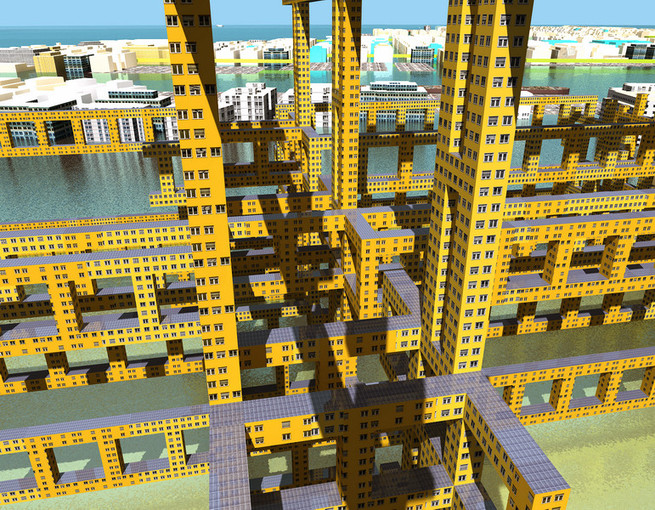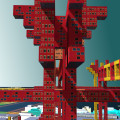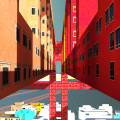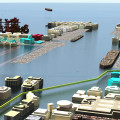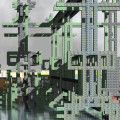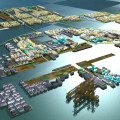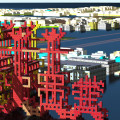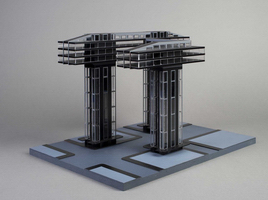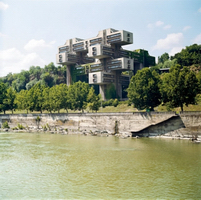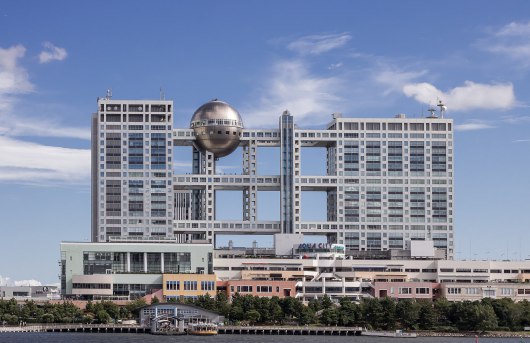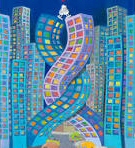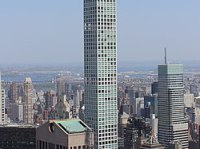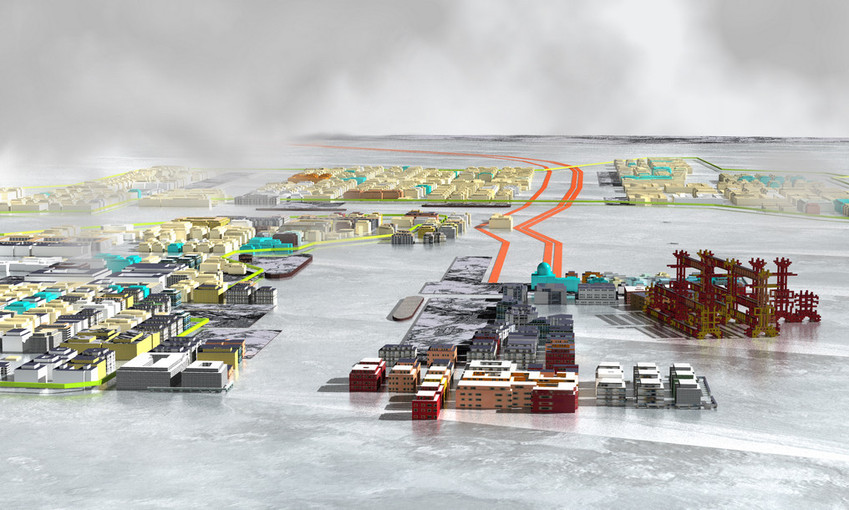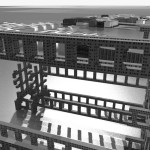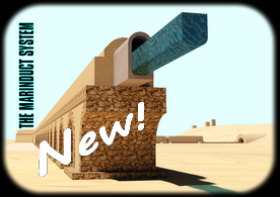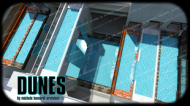The Crane
Village
by Michele Leonardi architect ©
April 2007 - concept; January 2014 - reloaded
design and renderings
all rights reserved © Michele Leonardi architect
REFERENCES
Below are some references of the collective imaginary regarding projects that have characteristics similar to the "Crane Village" concept.
Actually, when I imagined Crane Village in 2007, but also when I reworked it in 2014, I didn't have any of the following projects in mind. In fact, I had started from something completely different.
That is I started from the idea of a wooden building, on a much, much smaller scale, intended for a Scandinavian location in Northern Europe. I was thinking about the Vikings, blacksmiths and shipwrights, and about the Russian Orthodox churches. A building as tall as six men stacked on top of each other, or a little more. And wooden. So nothing to do with the excellent, intelligent and "DIY" children's games of Meccano and Lego (miniaturized systemic constructions to play). Nor with certain representations of simplified skyscrapers present in the magnificent works of Mordillo. Nor could I have thought of certain skyscrapers near Central Park in Manhattan, New York, that did not exist at the time. Nor did I even think of the time to the following fabulous, visionary, eternal projects and realisations, who tell us that the way is already open. "Alea iacta est", the die is cast.
To say another, in particular on the horizontal photovoltaic panels depicted in the Crane Village renderings: still in 2014 there was no similar commercial product, as far as I knew then and still, but a few years later exactly the panels came out on the market horizontal photovoltaic systems, while before to achieve their purpose they had to be installed inclined and towards the south. In short, it didn't take much to imagine that there would have been a subsequent improvement of this technological energy production system, an efficiency improvement, which currently allows them to be oriented almost as desired: horizontally, vertically, etc.
I also discovered this incredible realization later, a few years ago, maybe in 2016:
"The Georgia Bank Headquarters" in Tiblisi, Georgia,
by Giorgi Chakhava and Zurab Jalaghania architects, 1974:
Since there is no mention of it in the most important texts on the history of modern and contemporary architecture, thanks to the Internet and the website of the "Piero Portaluppi Foundation", recently, in retrospect to my conception of "Crane Village" (still only a concept), I discovered the existence of following project by the Italian and Milanese architect Piero Portaluppi (1888-1967), id est his "Hellytown", 1926:
A project which in turn brings to mind the later Torre Velasca (1958) by the Milanese Architects B.B.P.R.:
Always in retrospect, one of Kenzo Tange's (1913-2005) most futuristic and "strange" architectures comes to my mind: The Fuji Television Building in Tokyo by a master of modern and contemporary architecture like Kenzo Tange, 1996 (I have to admit that at the time I did not understand this work of Tange's, and it seemed to me almost a regression of him from the whole of his works, which are magnificent):
More references:
1) The "Lego Technic" components, a perfect example of "systemic constructions".
2) The skyscrapers in the famous drawings by Guillermo Mordillo (1932-2019).
3) And more recently the new skyscrapers in the Midtown Manhattan, near Central Park, New York, like the "432, Park Avenue" Condominium, a residential skyscraper (start 2011, foundation-2015 end):
( 1 )
One more time, let's review "The Crane Village",
only a concept of course, by Michele Leonardi Architect, 2007, 2014:



